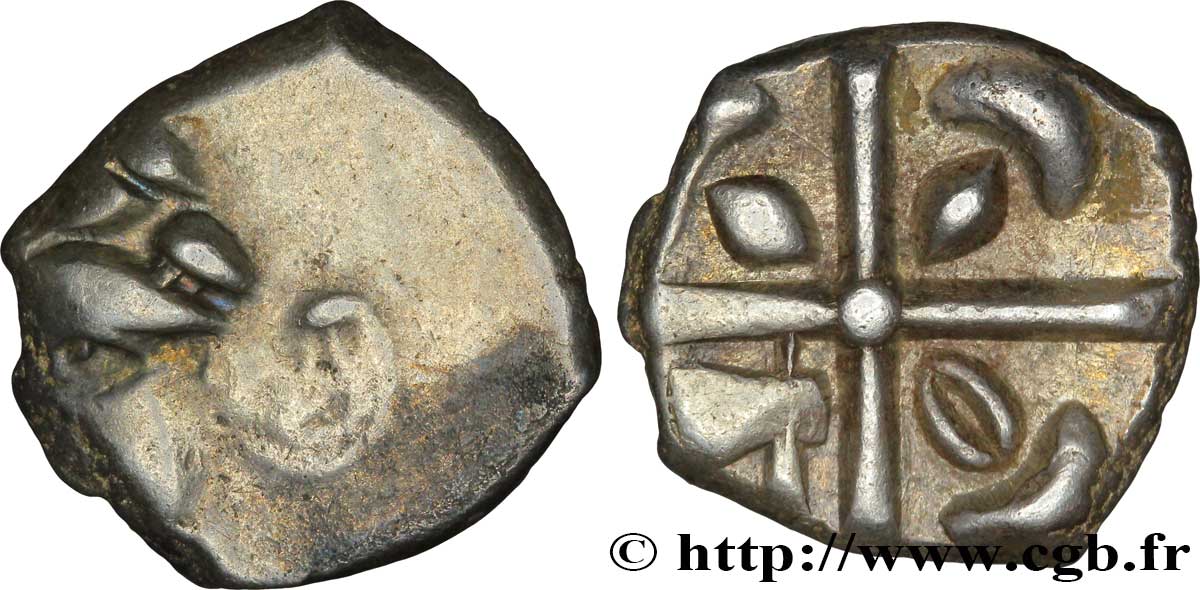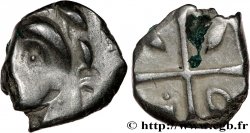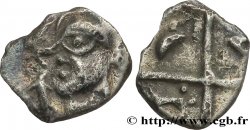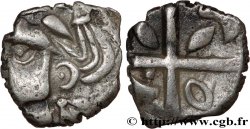E-auction 51-21931 - bga_253404 - GALLIA - SOUTH WESTERN GAUL - VOLCÆ TECTOSAGES (Area of Toulouse) Drachme de style hybride entre “cubiste et romanisé”, indéterminée
You must signin and be an approved bidder to bid, LOGIN TO BID. Accounts are subject to approval and the approval process takes place within 48 hours. Do not wait until the day a sale closes to register. Clicking on « bid » constitutes acceptance of the terms of use of cgb.fr private e-auctions.
Bids must be placed in whole Euro amounts only. The sale will start closing at the time stated on the item description; any bids received at the site after the closing time will not be executed. Transmission times may vary and bids could be rejected if you wait until the last second. For further information ckeck the E-auctions F.A.Q.
NO BUYER'S FEE.
NO BUYER'S FEE.
| Estimate : | 90 € |
| Price : | 40 € |
| Maximum bid : | 40 € |
| End of the sale : | 07 April 2014 15:14:00 |
| bidders : | 7 bidders |
Type : Drachme de style hybride entre “cubiste et romanisé”, indéterminée
Date: IIe siècle av. J.-C
Metal : silver
Diameter : 14,5 mm
Orientation dies : 6 h.
Weight : 3,28 g.
Rarity : R1
Coments on the condition:
Flan relativement large, avec un avers décentré et de frappe molle. Superbe revers centré et complet, avec son brillant de frappe. Fine patine irisée, de collection ancienne, avec une zone plus sombre sur le bas
Catalogue references :
Predigree :
Cet exemplaire provient de la collection G. Savès, et très probablement du Trésor de la Dordogne
Obverse
Obverse legend : ANÉPIGRAPHE.
Obverse description : Tête à gauche ; la joue étroite et le menton en galoche, le nez fort ; chevelure retombant sur l'oreille avec des mèches qui se rejoignent en chignon derrière la nuque ; un collier de perles à la base du cou ; deux dauphins stylisés devant la bouche.
Reverse
Reverse legend : ANÉPIGRAPHE.
Reverse description : Croix formée de quatre cantons ornés chacun d'une lunule : balle de fronde aux 1er et 2e cantons, une hache au 3e et un pendant en ellipse au 4e canton.
Commentary
Ce type est toujours de poids lourd, autour de 3,5 grammes. Bien que typologiquement proche des monnaies cubistes, avec un revers immobilisé, la métrologie les rapproche plutôt des monnaies dites "languedociennes".
Ces drachmes sont difficile à classer selon l’ouvrage de Savès, ce dernier n’ayant pas vraiment pris en compte la métrologie...
Au revers, cet exemplaire a une croix bouletée.
Ces drachmes sont difficile à classer selon l’ouvrage de Savès, ce dernier n’ayant pas vraiment pris en compte la métrologie...
Au revers, cet exemplaire a une croix bouletée.








 Report a mistake
Report a mistake Print the page
Print the page Share my selection
Share my selection Ask a question
Ask a question Consign / sell
Consign / sell
 Full data
Full data



